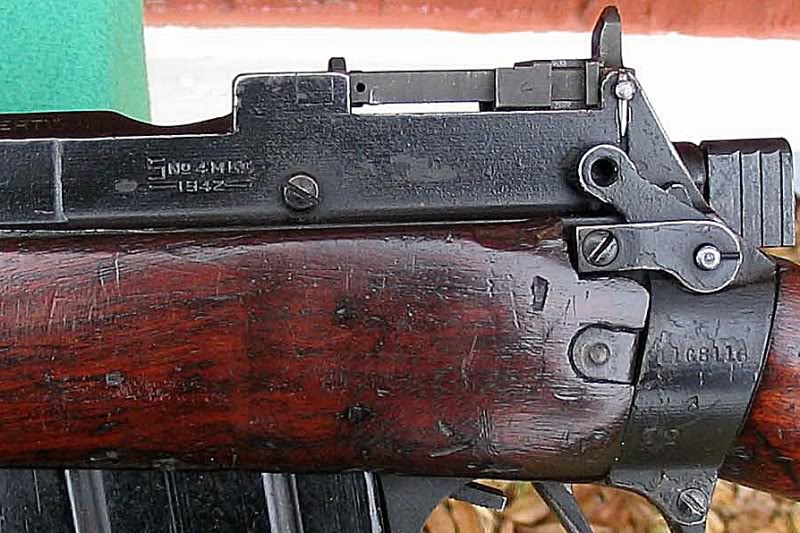

- #Lee enfield no4 mk1 serial numbers location serial number#
- #Lee enfield no4 mk1 serial numbers location upgrade#
- #Lee enfield no4 mk1 serial numbers location full#
- #Lee enfield no4 mk1 serial numbers location plus#
The first stage also draws the striker back roughly 1/16 inch to full cock. The trigger pull is decent, probably about 4.5 pounds with the usual two stage pull common to military service rifles of the period. Mauser 98s, Russian Mosin-Nagants and Japanese Arisakas used a similar method to adjust windage.

This was performed by moving the front sight (available in five heights) laterally in its dovetail after zeroing with the issue Mk VII cartridges. No No.4 rifles had rear sight incorporated windage adjustment. A downside is that it is quite easy to inadvertently nudge the range setting. Elevation is performed by a small spring-loaded detent tab that is much faster to use than the fine-thread Vernier click-adjustable screw of the original sighting system used on the first No. This example of the MK 1/2 again wears an adjustable Mk II ladder, but with simple stamped construction and engraved range markings from 200-1,300 yards. The second type was used on the MK 1*, a very simple, L-shaped, two position aperture (similar to that of the early M16 rifles) with one aperture set for 200 yards and a higher one with a smaller aperture set for 500 yards. The first was similar to what the later MK 2s wore, a finely machined ladder type aperture with a click adjustable knurled knob for fine elevation adjustment. 4 rifles wore three main types of rear sights. It shows no obvious throat erosion or pitting from corrosive priming or lack of care.
#Lee enfield no4 mk1 serial numbers location plus#
These may be simply cemented into place, or attached with oak dowel pins plus cement in larger pieces, such as that of the butt heel.Ĭuriously, there appears to be a nearly mint five-groove barrel in my sample rifle. Other repairs included new wooden blocks at the butt stock heel, around the lateral rear cross-screw and escutcheon near the butt stock socket, on the right side of the trigger guard and near the left receiver ring. This isolated the effect of moisture by changing the direct engagement and disengagement of the trigger on the cocking piece and sear of the bolt. It was precisely drilled after installation to ensure the perfect alignment of the trigger and sear engagement, thereby providing the best possible trigger pull. 4 MK 2.) This metal block was not completely fitted when installed. 4 receiver, which the trigger was then hinged on via a cross-pin. The "1/2" designation involved the installation of a small steel block onto the otherwise stock No. This was most noticeable during the Burma and SE Asian campaigns. When wood gets soaked, it can expand and this can change the trigger pull. While this might not seem to be a big deal, in humid or rainy climates it was. All Lee-Enfield rifles through the end of WW II had their triggers pivoting from the trigger guard / bottom iron.
#Lee enfield no4 mk1 serial numbers location upgrade#
It represents a minor technological upgrade of the No. The new designation is the title of this article.
#Lee enfield no4 mk1 serial numbers location serial number#
Another new serial number was stamped onto the bottom of the fore end. The original model and serial were crudely electric pencil lined out and a new one was placed further forward on the left receiver wall. Items that were replaced included the complete bolt, so the receiver was renumbered with the new number of the bolt. This serial number differs from the one it was given during its rebuild. 4 Mk I and this, plus its serial number, was stamped into the left rear receiver bridge just below the rear sight. 4 rifle, its original designation was No. The example I am reviewing is a representative of what the armorers there performed.

Photo by David Tong.Īfter WWII, the Royal Ordnance Factory Fazakerley was the sole facility used by the British to rehabilitate rifles tired by five years of arduous service.


 0 kommentar(er)
0 kommentar(er)
